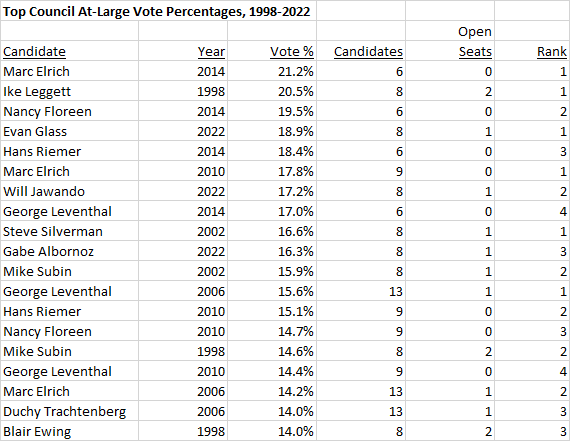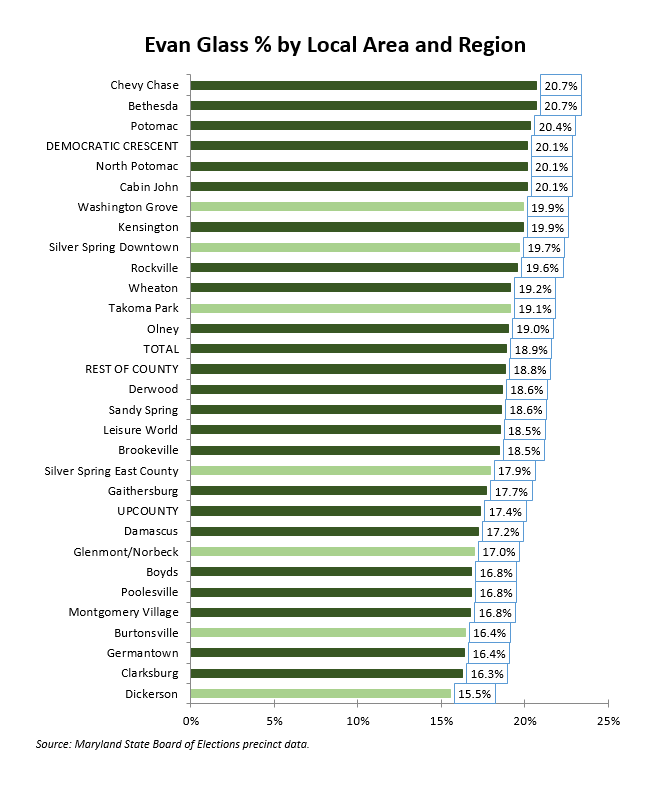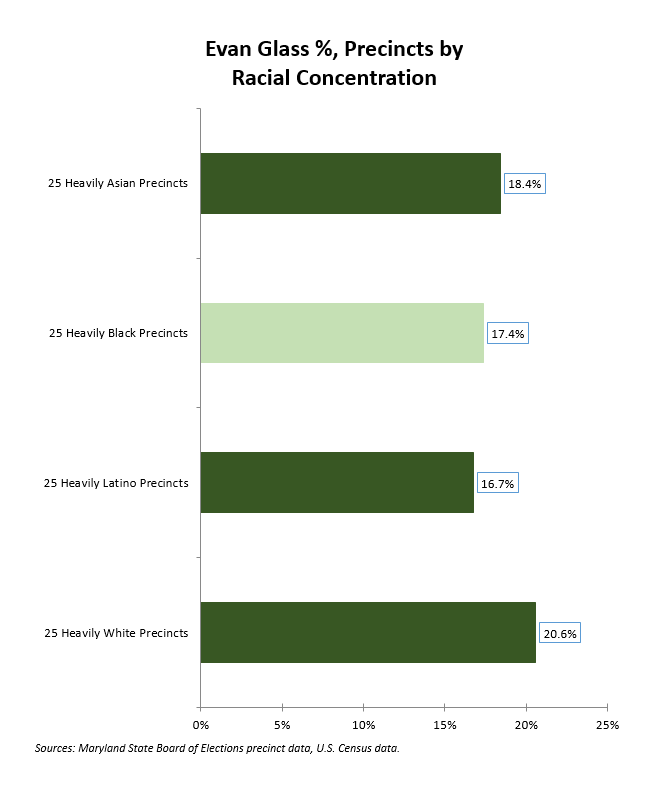By Adam Pagnucco.
Evan Glass has paid his dues. He has been a civic association leader, a county task force member, a county advisory committee chair, a board member of multiple non-profits (including ones related to housing and environmental protection), a journalist, and almost everything else except a PTA leader. (It’s not too late to have a kid, Evan!) Eight years ago, he lost an agonizingly close race to Tom Hucker for the Council District 5 seat. Four years ago, he finished third in the council at-large race. And this year?
This is the year that Evan Glass became the most popular county elected official in MoCo.
Think I’m exaggerating? Glass earned more votes in the at-large primary – 88,301 – than any other candidate who has run for council at-large. But that’s not a fair comparison since population growth has driven up vote totals over time. The table below shows the highest percentages of the vote earned by Democratic council at-large candidates in the primary since 1998.

On this measure, Glass ranks fourth over the last 24 years. Considering that he ran against more candidates than two of the three people ahead of him, that’s pretty good. Also look at the company he is in – Marc Elrich, Ike Leggett and Nancy Floreen. Again, that’s good – historically good. Compared to eight years ago, Glass’s political career is on a sharp upwards arc.
Glass maxed out his matching funds in public financing and got almost every endorsement worth getting, including the Post, MCEA, the two biggest SEIU locals in the county, Casa in Action, MCGEO, the Sierra Club, the career and volunteer fire fighters – OK, I’m running out of ink. The point here is that Glass was a strong incumbent who ran like a strong incumbent and finished at the top. Any council at-large candidate who racks up a performance comparable in any way to Ike Leggett deserves respect.
Now to the particulars. The chart below shows Glass’s results by local area and region. Bars in dark green show a first place finish. Bars in light green show a second place finish. There are no other bars because Glass did not finish third or lower in any community.

Not impressed? I’ll keep trying. Out of 256 voting precincts, Glass finished first in 172 and second in 66. That’s about as good as it gets in a contested countywide race.
The chart below shows how Glass did in the county’s racially concentrated precincts. (See my methodology post for definitions.) Again, bars in dark green show a first place finish and bars in light green show a second place finish.

Glass finished second to Will Jawando in the heavily Black precincts but finished first in the Asian, Latino and White precincts. (And in the Black precincts, Glass’s percentage of 17.4% was not much less than Jawando’s percentage of 19.0%.)
The natural question asked of a leading council at-large candidate is how that person would do in a subsequent county executive race. And here is where it gets complicated. Remember the Waldstreicher Doctrine? A vote for an at-large candidate does not necessarily equate to a first choice vote, whereas in a one-seat race like executive, it does. Therefore, at-large council members who run for executive always suffer a vote dropoff. Here is what happened the last four times that an at-large council member ran for executive in the very next election.

On average, an at-large council member loses about half their votes when they run for executive. That’s not great, but if that math applies to Glass, he could conceivably get 40,000 or more votes in a Democratic primary for the big chair. That’s more than Marc Elrich got in 2018. I’m not forecasting outcomes for the next executive race – or the next race for an open congressional seat – but if he wants to, Evan Glass could play at a high level.
All of which gives me a lot to write about!
